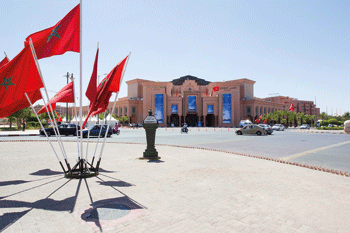
Beyond Marrakesh
By Jens Bammel, Secretary General, International Publishers Association (IPA)

Congratulations on the conclusion of the Marrakesh Treaty! The adoption of the treaty text is an important step in helping readers with print disabilities around the world to access books, and is an important political step for all stakeholders.
It is a truism that the conclusion of an international treaty by itself achieves little, since everything depends on national implementation. For this reason, we should not spend too much time looking back but instead we must look to the future. The road to Marrakesh may not have been easy but it was surely shorter than the one that lies ahead.
For each stakeholder the steps required to achieve the treaty's purpose will be slightly different.
For WIPO, Marrakesh has demonstrated that it is an organization fully capable of realizing international treaties even in new and difficult areas. This, in itself, is no small achievement. Thanks to the work of its capable secretariat, WIPO was able to channel the existing political will, give it direction and produce a decisive result. As its next step, WIPO must now help its member states bring their national laws into line with the provisions of the treaty. Member states will require guidance as they seek clarity on how this treaty will work in practice. This is an important task, especially in view of the high expectations for quick results.
For the World Blind Union, the treaty creates the real prospect that many thousands of copies of works in accessible formats currently held in special libraries in different countries can be exchanged. This is a great step for the many print disabled persons who are connected to such services, and who have the skills and the technology to access such copies. Achieving rapid implementation of the treaty will be a priority before advancing technology reduces the need for such services or changes the role of the service providers. However, a major and daunting task remains: to reach and help the vast majority of print disabled persons in developing countries who are currently outside of the reach of charities that can provide accessible format copies. While the direct distribution of accessible format works may help address this issue in part, significant guidance and capacity building will be needed to put the relevant treaty provisions into practice in such cases.
The three-step test explained
Various international treaties, including the Berne Convention for the Protection of Literary and Artistic Works (Article 9(2)) and the Agreement on Trade-Related Aspects of Intellectual Property (TRIPS Agreement) (Article 13), allow for copyright to be limited under certain special circumstances. Generally, such copyright limitations and exceptions must satisfy the so-called three-step test, that is, they must be confined to
- certain special cases where the reproduction of the work
- does not conflict with the normal exploitation of the work and
- does not unreasonably prejudice the legitimate interests of the copyright owner.
Fortunately, there is the political will to help. The fact that 51 WIPO member states signed the treaty after it was adopted shows that many governments take the issue of equal access for persons with print disabilities seriously, not just as a humanitarian need but as a policy objective. All WIPO member states will need to consider how the Marrakesh treaty can be implemented so that it actually improves access. For many countries this will mean a broader review of their accessibility policies. Only with extra resources, capacity building, and local collaboration with rightholders can the purpose of this treaty be fully achieved.

The stakeholders representing persons with print disabilities will need to determine what role WIPO should play in assisting them with capacity building, and with providing access to accessible format copies. The ‘virtual global accessible library' which has been touted as one possible model to ensure that the objectives of the treaty are met would require significant and appropriate resources.
For publishers, Marrakesh was successful because an important humanitarian objective was addressed while international copyright law remains substantially unchanged. The checks and balances in this treaty maintain long-established copyright principles including the three-step test (see box above). International copyright law has not been weakened, but reinforced.
For publishers, the focus of our efforts will remain readers with print disabilities. Technologies to provide equal access are improving constantly - publishers are adopting, developing and rolling them out globally. There is a real prospect that we can achieve fully inclusive publishing outputs, at least for newly published works, within the next five years.
The treaty has been carefully limited to accommodate a very specific humanitarian purpose within unique circumstances. In achieving this end, it does not alter the fundamental structure of international copyright law and, in setting clear limits to the international exchange of works the treaty confirms and reinforces the principle of territoriality of copyright.
As digital technologies change publishers, libraries and education at breakneck speeds, the Marrakesh treaty shows that we should focus on harnessing, not weakening, IP as a vital expression of the greatest resource the world has: the creativity, entrepreneurship and resourcefulness of people everywhere.
The WIPO Magazine is intended to help broaden public understanding of intellectual property and of WIPO’s work, and is not an official document of WIPO. The designations employed and the presentation of material throughout this publication do not imply the expression of any opinion whatsoever on the part of WIPO concerning the legal status of any country, territory or area or of its authorities, or concerning the delimitation of its frontiers or boundaries. This publication is not intended to reflect the views of the Member States or the WIPO Secretariat. The mention of specific companies or products of manufacturers does not imply that they are endorsed or recommended by WIPO in preference to others of a similar nature that are not mentioned.